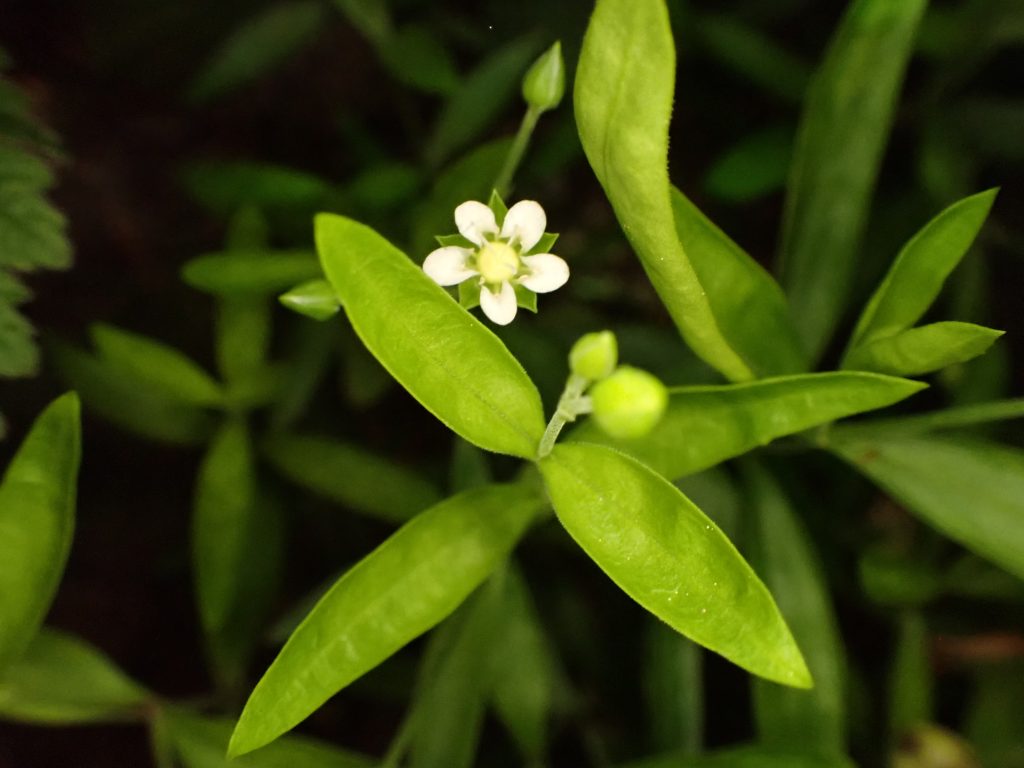
I first noticed this plant while wandering around with a headlamp waiting for bugs to show up at my lights whilst camping on the Wind River. Because I was focusing on the small circle of ground my headlamp illuminated in my search for invertebrates, the tiny flowers stood out more than they normally would. This is a handsome little plant, and fairly easy to separate from other sandworts due to its (relatively) longer, pointed leaves.
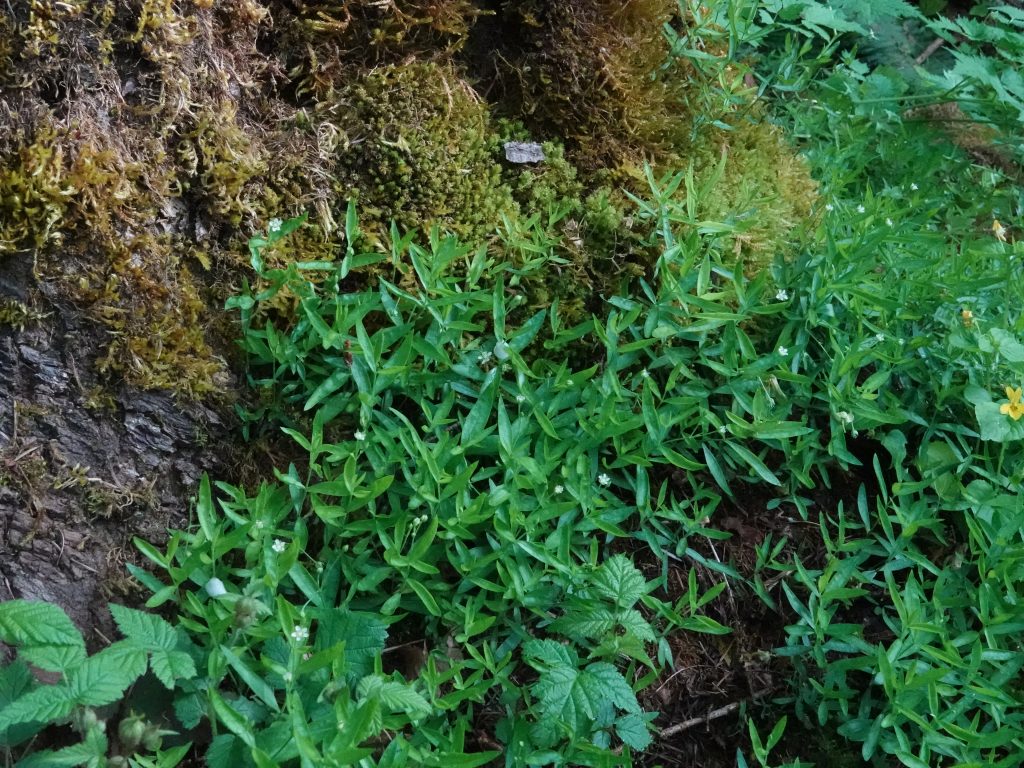
There is a paucity of in depth information regarding the place of this member of Caryophyllaceae in the ecosystems it inhabits. But I did find out that it is a myrmecochore, which means that it utilizes ants to disperse it seeds. I’ve talked about this before in profiles of Trillium ovatum, Viola adunca, Dicentra formosa, and Asarum caudatum, but possibly a quick review is in order. Myrmecochory involves producing a seed with an eliasome (strophiole), a spongy appendage on the seed that is rich in oils and protein. The ants then take the seed back to their nest and consume only the eliasome, discarding the rest and effectively plant the seed in a nutrient rich environment. Definitely a win/win situation, or what biologists call ‘mutualism’. Moehringia is the only North American genus in Caryophyllaceae to practice myrmecochory.
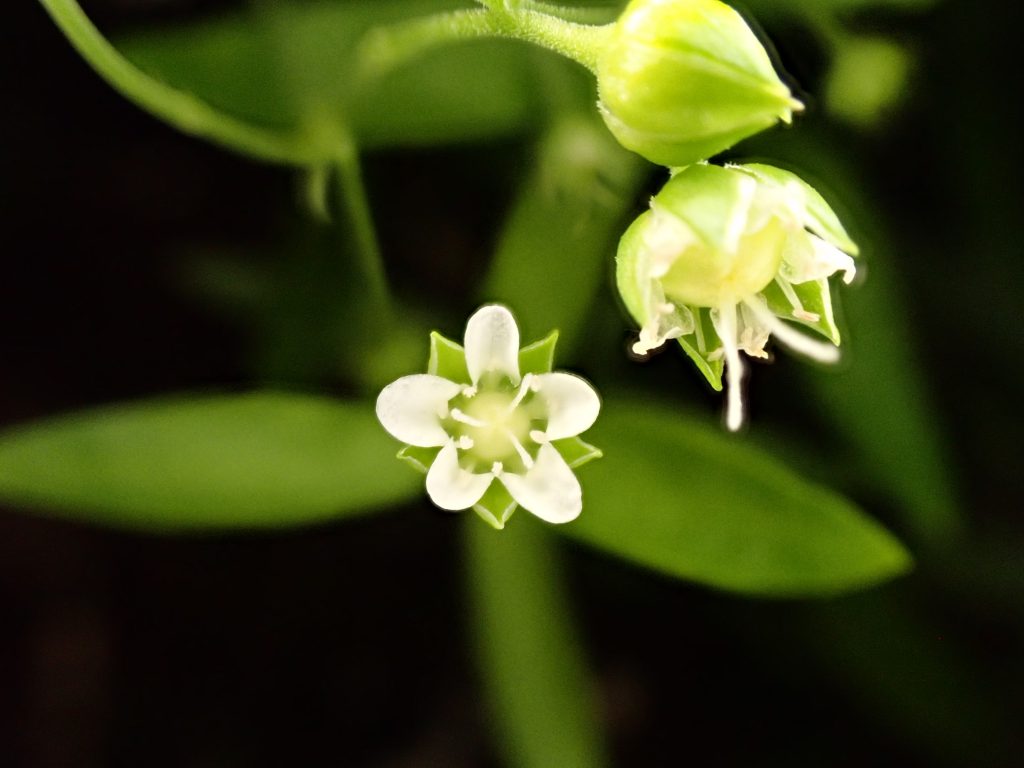
Description-Perennial; small (3-7” tall) multi-branched cushions or mats with sessile or nearly sessile, opposite, narrow, pointed leaves 1-2.5” long, and clusters (2-5) of flowers on petioles near the top of stems; rhizomes extensive; flowers small (3-6 mm wide), sepals pointed, green, and vary from almost as long as the petals to slightly longer than them; petals 5, white, rounded.
Similar species– Other Moehringia have rounded leaf tips; other Arenaria have smaller leaves.
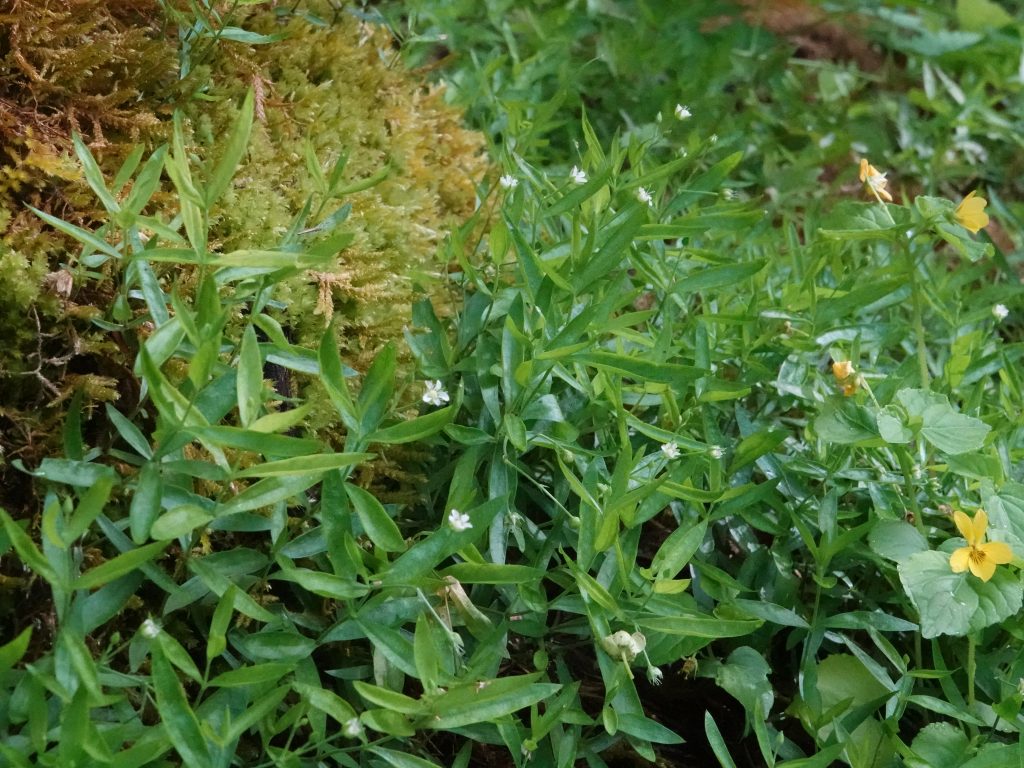
Habitat-Moist to mesic, shaded to open woods and forests, and rocky areas and meadows in montane regions, up to 7,000’ elevation
Range-Native; western and eastern North America and Asia; found region wide in appropriate habitat, but absent from shrub steppe.
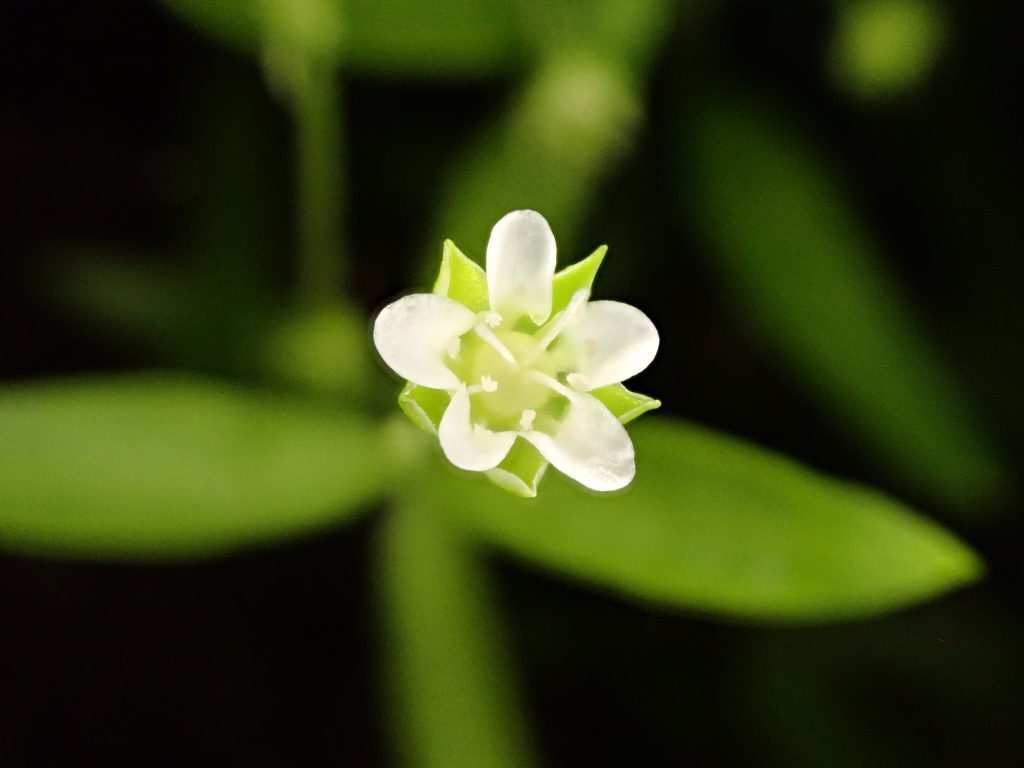
Reproductive timing-February to August
Eaten by-Some Cassida spp. (tortoise beetles); since the seeds are covered with eliasomes I would assume that they are consumed by things other than ants, but I can’t find corroboration of this; I would also guess that the foliage is consumed by various vertebrate and invertebrate herbivores, but can’t confirm this either.
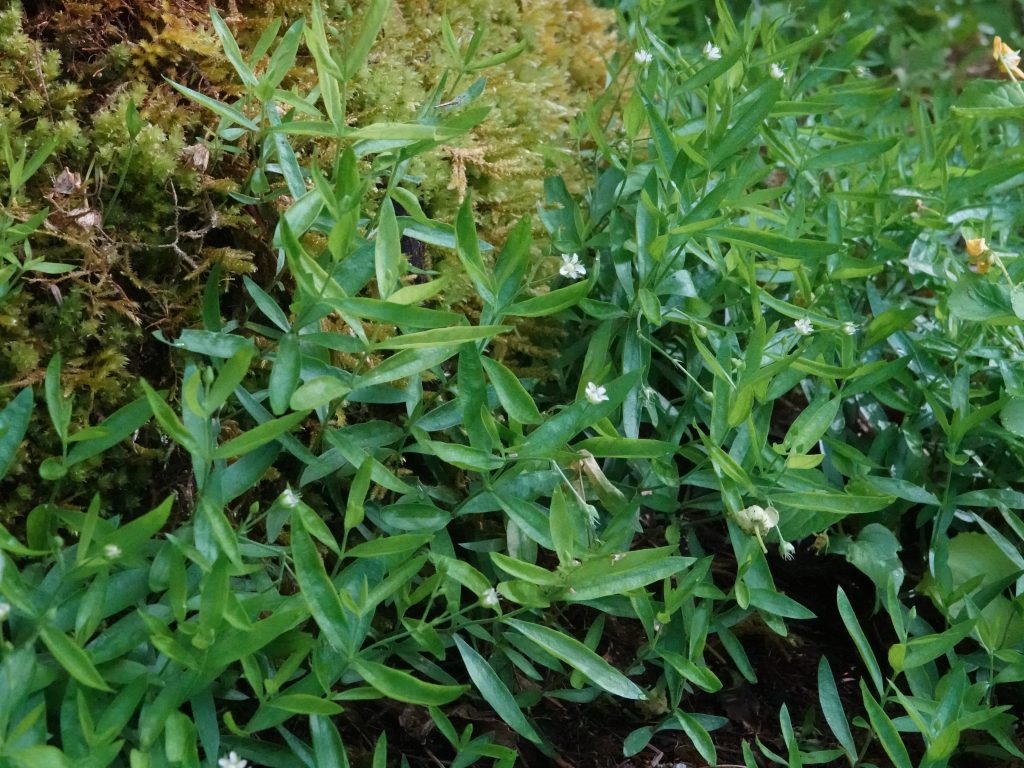
Etymology of names–Moehringia is named in honor of PHG Moehring (1710-1791), a German physician and botanist. This plant was formerly in the genus Arenaria, which is from the Latin word meaning ‘pertaining to sand’, which is also where the genus got the common name ‘sandwort’. The specific epithet macrophyllum is from the Greek words for ‘large leaves’, and though the leaves of this plant are small, they are very large by sandwort standards.
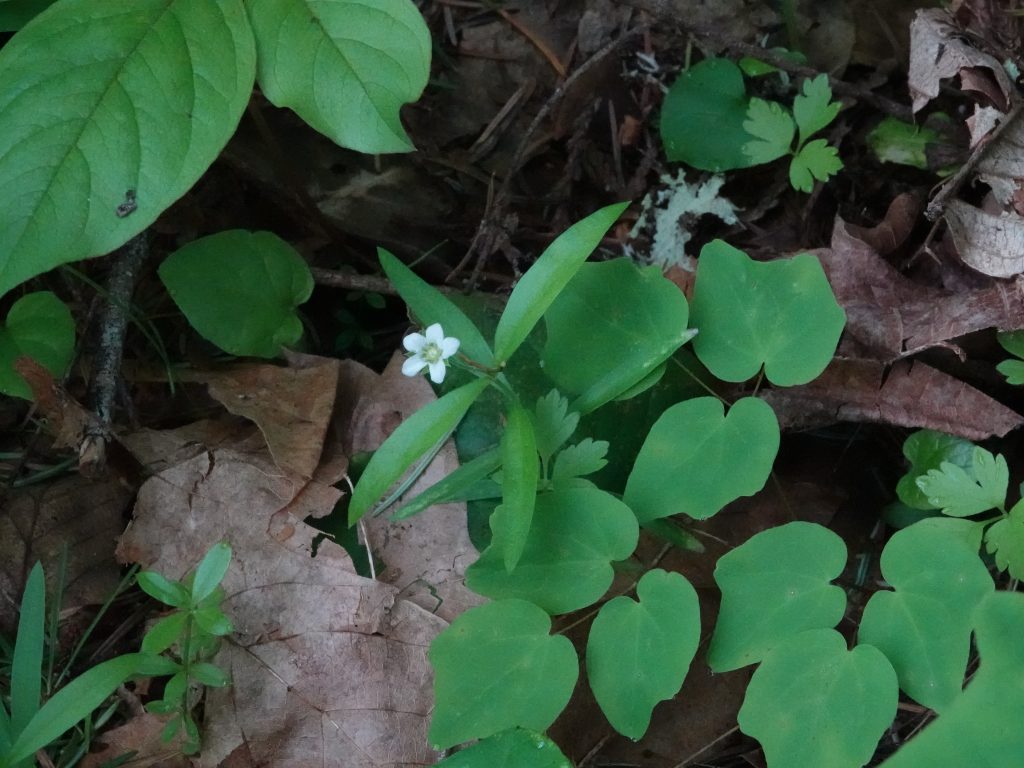
OregonFlora Moehringia macrophylla
http://www.efloras.org/florataxon.aspx?flora_id=1&taxon_id=250060659
https://en.wikipedia.org/wiki/Paul_M%C3%B6hring
Viola adunca – 10,000 Things of the Pacific Northwest
Dicentra formosa (Pacific Bleeding Heart) – 10,000 Things of the Pacific Northwest
Trillium ovatum (Western Trillium) – 10,000 Things of the Pacific Northwest
